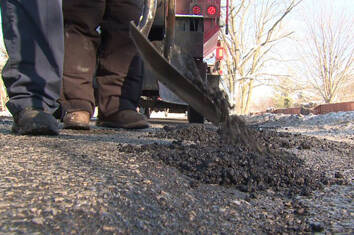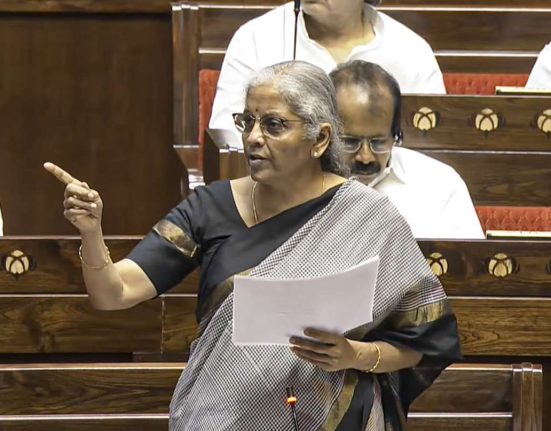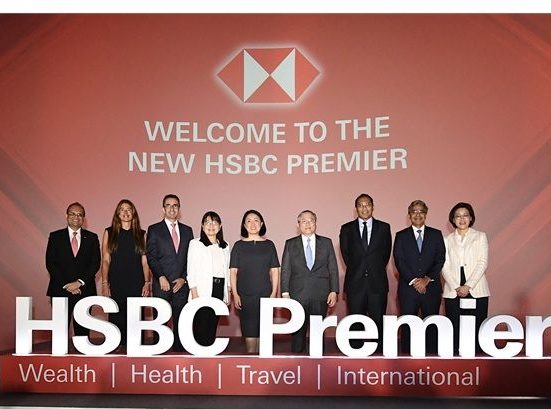Beginning in 2027, Indianapolis will be eligible for an additional $50 million for two straight years for its historically underfunded streets—but that comes with some asterisks.
Indianapolis Mayor Joe Hogsett and his staff have long pushed for a change in what has been called an “inequitable” road-funding formula. He called House Bill 1461, which Gov. Mike Braun signed into law May 1, “the most significant new investment from the state of Indiana into Indianapolis road infrastructure in decades.”
HB 1461 is an omnibus roads bill from House Roads and Transportation Committee Chair Rep. Jim Pressel, R-Rolling Prairie. The allocation of $50 million for Marion County will come from excess funds in the Community Crossings program, which previously provided funding for specific infrastructure projects. Under that program, Indianapolis received 11 cents back for every dollar it put in.
However, city officials will have to identify funds to match the additional allocation. And those funds can’t already be budgeted for infrastructure or public safety—an increasingly difficult task, given that lawmakers also just approved a major property tax cut expected to constrain local governments’ budgets.
Senate Bill 1’s impact
HB 1461 retools the city’s current Community Crossings grant program.
The state comptroller would examine the balance of the fund on Dec. 31. The first $100,000 would be allocated for local infrastructure matching grants in the coming year. That would maintain the status quo of the grant program.
In 2026, all of the remaining funds would be deposited into a state highway road construction improvement fund for railroad crossing upgrades.
In later years, the funds left over after the $100 million allocation could go to Marion County for use on secondary streets. That provision has a maximum of $50 million and is only in effect if Marion County matches those funds with new funds. According to the fiscal note created by the state’s nonpartisan Legislative Services Agency, Indianapolis should receive $50 million from this framework in both 2027 and 2028, provided the city makes the required match.
That means the city has the next two budget cycles to come up with the matching funds, work that has already begun.
“The work is beginning now to ensure those dollars are available come 2027,” Kyle Bloyd, chief communications officer for the Indianapolis Department of Public Works, told IBJ.
The additional funding would specifically go toward funding repairs on secondary roads. The new law requires that the city’s match come from funds currently not used for infrastructure or public safety, both of which make up the bulk of the city’s $1.6 billion budget. Still, Todd Wilson, director of the public works department, told councilors at a meeting of the Public Works Committee last month that the additional $50 million in state funding from HB 1461 is “historic.”
At the same time, the city’s Office of Finance and Management is working with experts to determine the impact of Senate Bill 1—which created the sweeping property tax cuts—according to spokeswoman Emily Kaufmann.
Property taxes paid by Marion County landowners fund much of the city’s budget. In 2025, the Hogsett administration estimates it will receive $474 million in property taxes, amounting to about 30% of the city’s revenue.
Because of the tax cuts, the state’s bipartisan Legislative Services Agency estimates that local governments will have $1.5 billion less to spend over the next three years on employee salaries, public infrastructure projects and services such as trash pickup, landscaping and parks.
Amendment also limits use
Coming up with the match isn’t the only potential barrier to securing the new funding.
Lawmakers also voted to prohibit Indianapolis officials from using the additional road funding for projects such as road diets, an increasingly popular trend of decreasing traffic lanes and increasing pedestrian and cyclist space.
Sen. Aaron Freeman, R-Indianapolis, authored that amendment. He disagrees with Indianapolis’ investment in road diets, like recent changes along West Michigan Street and planned changes for Madison Avenue. The Trump administration has also reversed course on these projects, which are intended to slow drivers.
Freeman argued that the funds should be used to fill potholes rather than create new bike lanes or trails.
Sen. Andrea Hunley, D-Indianapolis, voted against the amendment, saying these projects improve residents’ quality of life. But she and others within the party opted to vote in favor of the overall bill, which passed with broad support in both chambers. The final vote in the Senate was 38-10.
When asked about the provision requiring that these funds not be used for pedestrian- or cyclist-focused infrastructure, Kaufmann reiterated the city’s support for the legislation. Indianapolis officials are continuing to work on and fund efforts toward Vision Zero, or a goal of zero road deaths, which includes safety efforts for cyclists and pedestrians. And construction workers will kick off the first phase of the Madison Avenue road diet, from Ray Street to Pleasant Run North Drive, this season.







